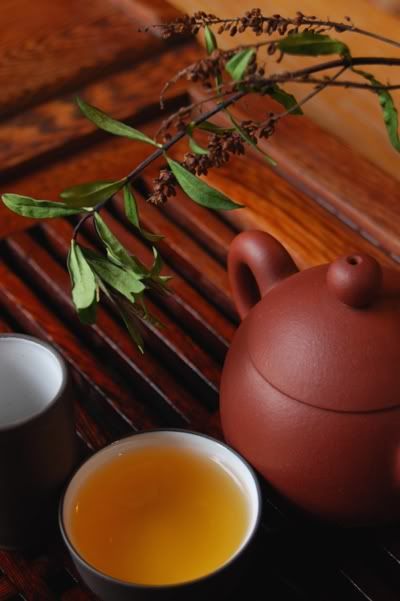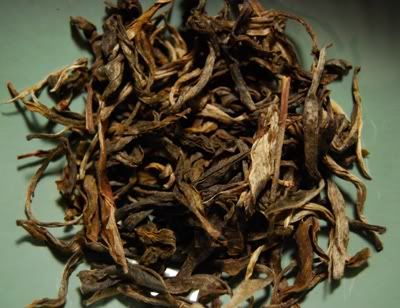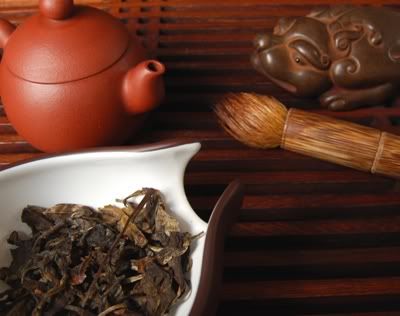I've been looking forward to writing this article for quite some time: courtesy of TA's generosity (plentiful thanks!), the same Xizihao leaves in maocha and bingcha form. This makes for a potentially informative experiment, as it allows any effect on the leaves to be compared.
Plus, they look really rather tasty.
I delayed writing this in order to have another two sessions with each tea, to ensure some representative notes.
Plus, they look really rather tasty.
I delayed writing this in order to have another two sessions with each tea, to ensure some representative notes.

The maocha is rich, dark, with a good proportion of tips. Xizihao make pretty teas, that much must be conceded.
They do look a touch fragmented...

...when compared with the fine examples in the bingcha (pictured below). Both have a satisfying aroma of tobacco - my favourite introduction to a leaf.

The scent in the wenxiangbei is striking, being a complex of Nannuo-style juniper on top and tobacco below. This is most noticeable in the bingcha - the maocha, while similar, is much lighter in the wenxiangbei.
This continues into the body of the tea, where the base flavour of the bingcha is that thick tobacco, with a sweet note of old honey over the top. The maocha differs little, but has a touch more acidity (which could be due to the fragmentation of the leaves), while seeming thinner in the body.
This is an enduring tea, and both bingcha and maocha leaves march out to the tenth infusion with no problem, retaining a chunky texture and interesting character throughout. That welcome acidity continues to provoke a challenging huigan.

The overall feeling is one of freshness, and I look forward to the juniper aroma in each new infusion.
Perhaps fated, here's one Xizihao that I'd be happy to buy - and it's no longer available for purchase, despite being only a 2007. C'est la vie.
Have a happy Eastertime - don't forget to celebrate the resurrection of Our Lord with several kilograms of dodgy chocolate eggs. It's a tradition handed down from apostolic times*.
Perhaps fated, here's one Xizihao that I'd be happy to buy - and it's no longer available for purchase, despite being only a 2007. C'est la vie.
Have a happy Eastertime - don't forget to celebrate the resurrection of Our Lord with several kilograms of dodgy chocolate eggs. It's a tradition handed down from apostolic times*.
*This may not be true.

No comments:
Post a Comment